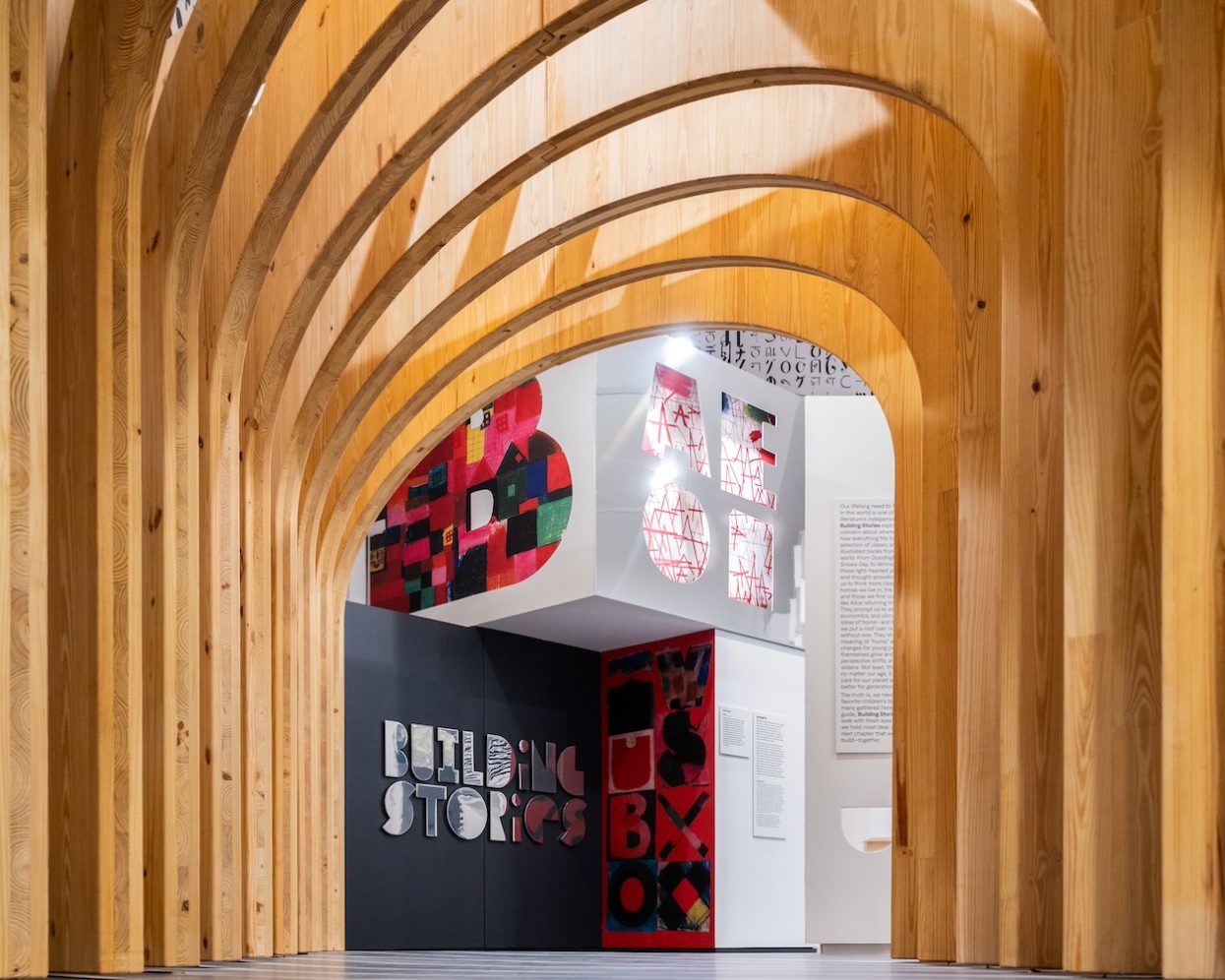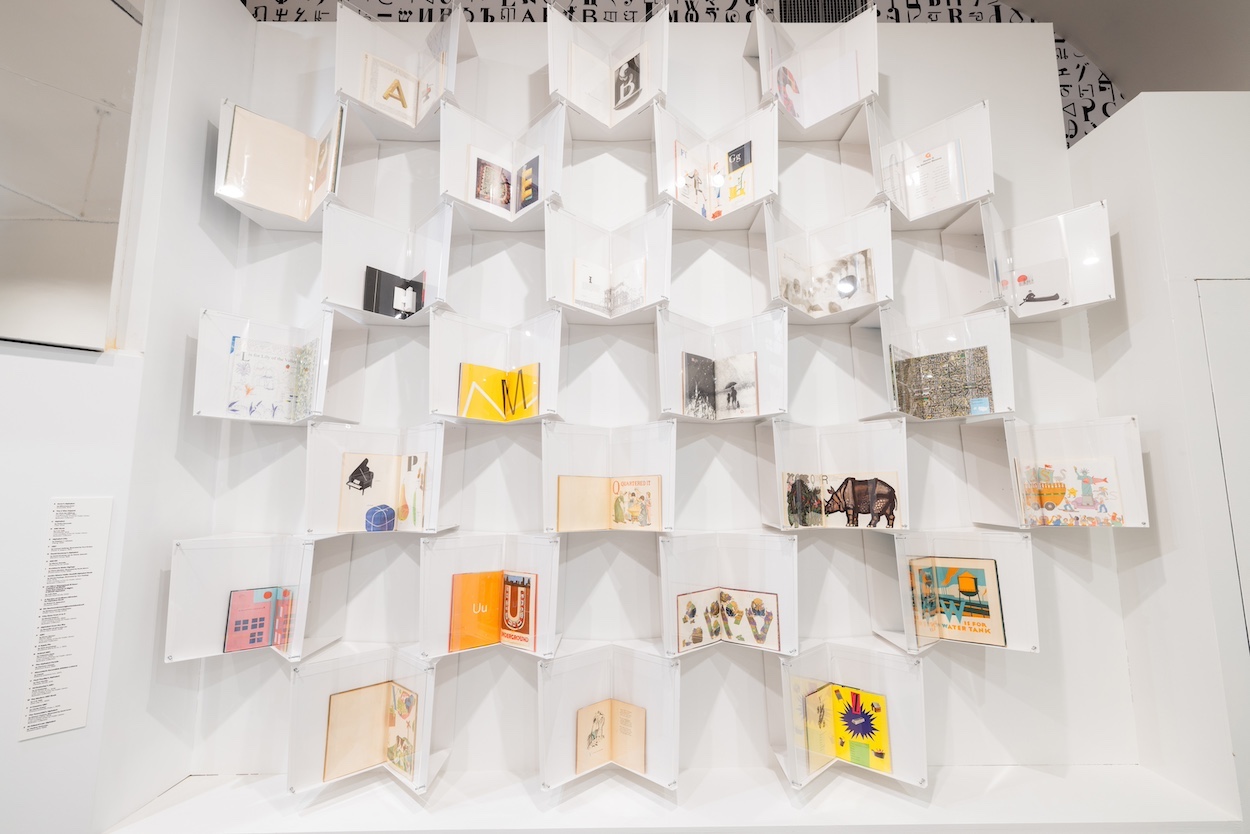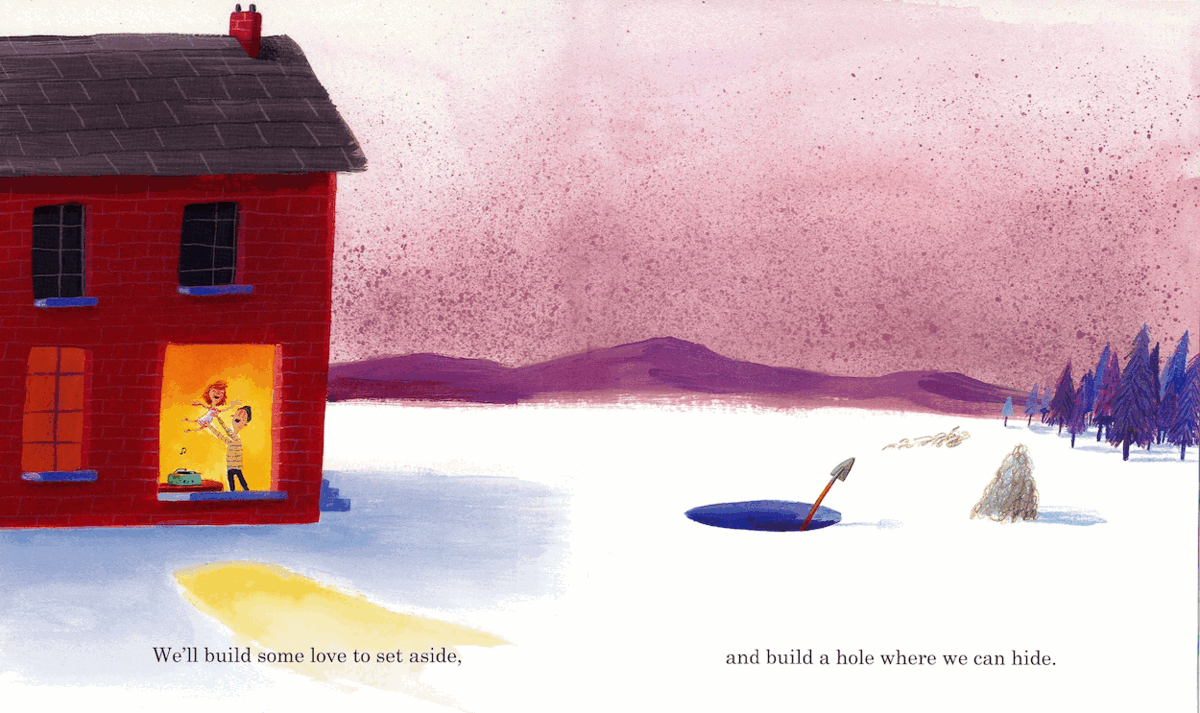Whether referring to a physical dwelling or a sense of belonging, “home” is a thorny concept that can be difficult to articulate. Many of our earliest notions of home, however, originate from the illustrated pages of children’s books, in which our lifelong desire for sanctuary persists as an indispensable storyline. Look no further than Margaret Wise Brown’s bedtime classic Goodnight Moon for a snapshot of an anthropomorphic bunny’s nightly rituals or Alice finding her way back from Wonderland in Lewis Carroll’s mind-bending fantasia. The light-hearted yet deeply felt stories we consume as children invite us to think more closely about the abodes we live in, the ones we leave, and how the concept strikes different chords around the world.
This universal concept informs “Building Stories,” a new exhibition at the National Building Museum in Washington, D.C., that opened this past Sunday. Curated by leading children’s literature expert Leonard Marcus, the show offers an in-depth look at how the imaginative lens of children’s books influences early perceptions of home and the built environment—and calls attention to the spaces as overlooked characters in these stories. Snippets of homes from titles like The Snow Day, Last Stop on Market Street, and The Phantom Tollbooth are situated in an immersive scenography, designed by Portland experiential studio Plus And Greater Than, which serves both as a portal to this interiority and asks questions about how culture, economics, and climate shape how we first begin thinking about the roof over our heads.
The show suggests there’s ample wisdom to plumb from the worlds contained within children’s literature. And according to Nick Elias, indulging in this nostalgia can even sharpen one’s design skills. A decade ago, the English architect reimagined the English industrial town of Slough through the lens of Winnie-the-Pooh, the naive but friendly stuffed bear dreamed up by the lonely Christopher Robin as a reprieve from reality. A dreary landscape overlaid with scenes from the book, PoohTown, as Elias called his proposal, was built on an industry of happiness, not capital. “[It] argues if we were to start designing for our emotional, mental state,” Elias told Architizer, “then we may ask less of the physical world through a resolved sense of belonging.” No matter one’s age, location, or worldview, a sweeter future may be a mere page turn away.



